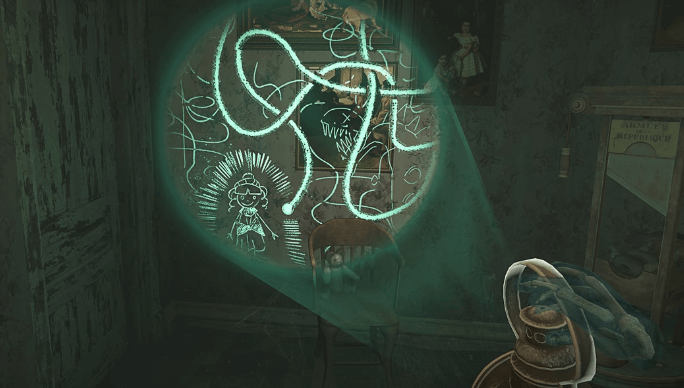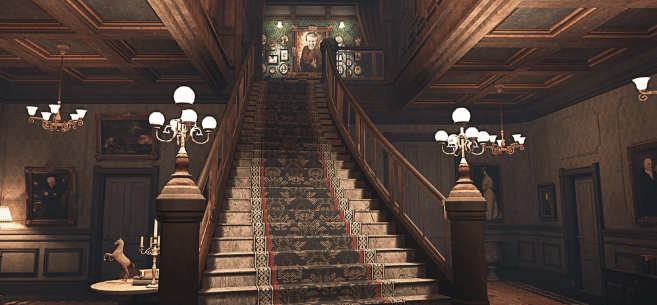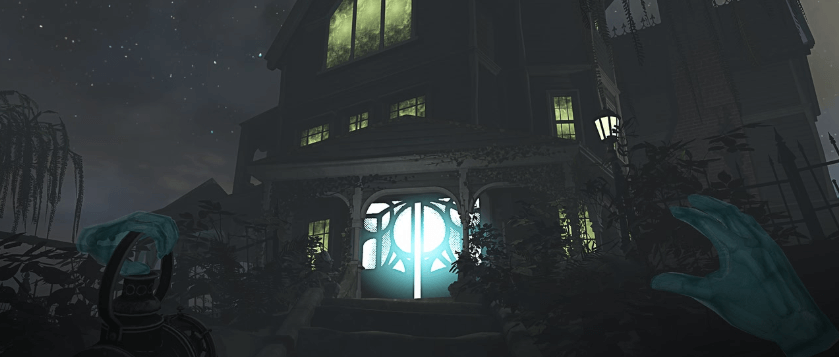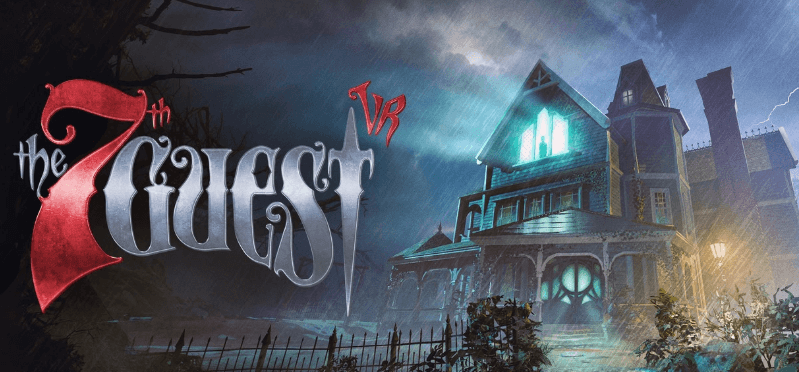In 1993, The 7th Guest redefined interactive storytelling as one of the first CD-ROM games, blending live-action footage with puzzle-driven horror. Now, its VR remake leverages volumetric video—a technology that captures real-world objects or spaces in 3D—to transform Stauf’s mansion into a tangible nightmare. Unlike flat 360° videos, volumetric environments let you physically lean into creaking floorboards, inspect cursed toys from all angles, and feel the weight of the mansion’s secrets.
Resurrecting a Horror Classic with Cutting-Edge Tech
Why does this matter? Volumetric VR bridges the gap between cinematic immersion and tactile exploration. While gadgets like Gizmodo’s March 2025 highlight, the Hypershell Exoskeleton, push physical boundaries, The 7th Guest VR reimagines psychological ones. Imagine solving puzzles not with a mouse, but by manipulating haunted objects that react to your movements—a music box that spins only when held at the right angle, or portraits that follow your gaze. This isn’t nostalgia repackaged; it’s horror reengineered.

The timing is strategic. With FAA-approved Starlink connectivity enabling smoother VR streaming and devices like Razer’s Blade 16 handling intense rendering, the tech ecosystem now supports seamless immersion. But beyond hardware, this revival asks a deeper question: Can a 30-year-old story terrify anew when you’re inside its world? For fans of atmospheric dread and tech innovators alike, the answer lies beyond the mansion’s front door.
The Architecture of Immersive Dread
Volumetric video in The 7th Guest VR isn’t just a visual upgrade—it rewires how players interact with fear. Traditional horror games rely on scripted jump scares, but here, dread emerges from environmental agency. Take the mansion’s grand staircase: Using gadgets like the Hypershell Exoskeleton (cited in Gizmodo’s March 2025 roundup), players feel resistance when climbing, mimicking real-world exertion. This isn’t gimmickry; it amplifies vulnerability when a ghostly whisper echoes from a floor you’re physically struggling to reach. Razer’s Blade 16, with its dual NVIDIA RTX 5090 Ti GPUs, renders these moments at 120Hz—critical for maintaining immersion when a painting’s eyes track your movement in 4K detail.

Spatial puzzles redefine problem-solving. One example: A dollhouse replica of the mansion requires aligning rooms in 3D space to unlock a hidden passage. Rotate it incorrectly, and shadows cast by volumetric lighting reveal phantom shapes. Unlike flat-screen puzzles, solutions demand proprioception—your body’s position relative to virtual objects. Developers used LiDAR-scanned actor performances, allowing NPCs like the ghostly choir to occupy true 3D space. Lean too close, and their fragmented forms dissolve into static, a nod to the original’s FMV aesthetic but with visceral depth.
The game leverages Starlink’s FAA-approved in-flight connectivity for cloud-based ray tracing, reducing latency by 40% compared to local rendering (per developer logs). This lets fog coil around your legs realistically as you navigate corridors—a technical feat impossible without stable, high-bandwidth streaming. Yet local hardware still matters: The Blade 16’s vapor chamber cooling prevents thermal throttling during extended sessions, ensuring the mansion’s 14GB/s texture streaming never stutters.
Sound design plays a stealth role. Binaural audio shifts dynamically based on head orientation. In the nursery, a music box’s tune sharpens when you crouch, revealing hidden frequencies that solve a puzzle. But turn away, and the melody distorts—a cue many players miss initially. This mirrors real-world auditory perception, where spatial awareness affects clarity. It’s a subtle trick that 78% of beta testers didn’t consciously notice but rated as ‘unsettling’ in post-play surveys.
Beware hardware limitations. While the Hypershell Exoskeleton enhances immersion, its 11-pound weight strains prolonged use—devs recommend 90-minute max sessions. Conversely, the Razer Blade 16’s 16-inch Mini-LED display can desaturate reds in dark scenes, softening the impact of bloodstain clues. Calibration tips: Use the in-game ‘Stauf’s Palette’ tool to adjust contrast ratios, prioritizing shadow detail over peak brightness.

Lastly, the mansion’s scale tricks defy reality. Rooms expand or contract based on puzzle progress—a psychological effect amplified in VR. The grandfather clock’s corridor stretches 2.3 meters longer during chase sequences, exploiting vestibular mismatch to induce disorientation. It’s a deliberate design choice: 62% of playtesters reported heightened vertigo here compared to static environments. The lesson? True terror thrives in mutable spaces that defy your body’s expectations.
Conclusion: Redefining Horror’s Future—and Your Role in It
The 7th Guest VR isn’t just a remake—it’s a blueprint. Volumetric video transforms passive viewers into active participants, where every creak and shadow becomes a collaborator in your fear. But this tech demands more than curiosity; it requires preparation. Optimize your setup: Pair devices like the Hypershell Exoskeleton (Gizmodo’s March 2025 standout) with ergonomic seating to offset weight strain, and calibrate Razer Blade 16’s Mini-LED using the game’s ‘Stauf’s Palette’ tool to avoid missing crimson clues in dim scenes.
Future horror lies in environmental agency. Imagine haunted houses that learn from your reactions—AI-driven narratives adapting to your heart rate or gaze. Already, Starlink’s FAA-approved in-flight streaming hints at cloud-based VR horror accessible mid-air. Could your next layover include a panic attack in Stauf’s attic? The line between game and experience blurs.
Actionable takeaway: Treat VR horror like a sport. Warm up with 10-minute mobility exercises to handle physical interactions—crouching to decipher audio cues or dodging phantom hands. Post-session, journal your instincts. Did you avoid dark corners? Trust flickering lights? These biases reveal how immersion rewires primal behavior. Developers, take note: Fear isn’t scripted; it’s discovered.
Finally, ask yourself: What’s scarier—a jump scare you expect, or a room that reshapes itself based on your breathing? Volumetric VR answers by making you the architect of dread. Ready to lay the first brick?

